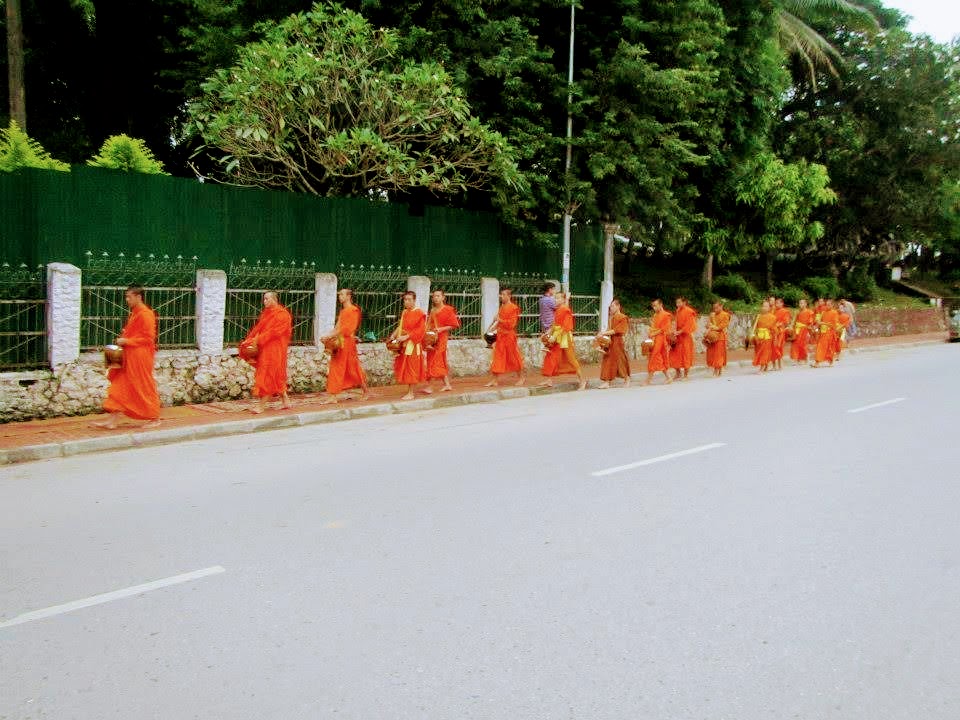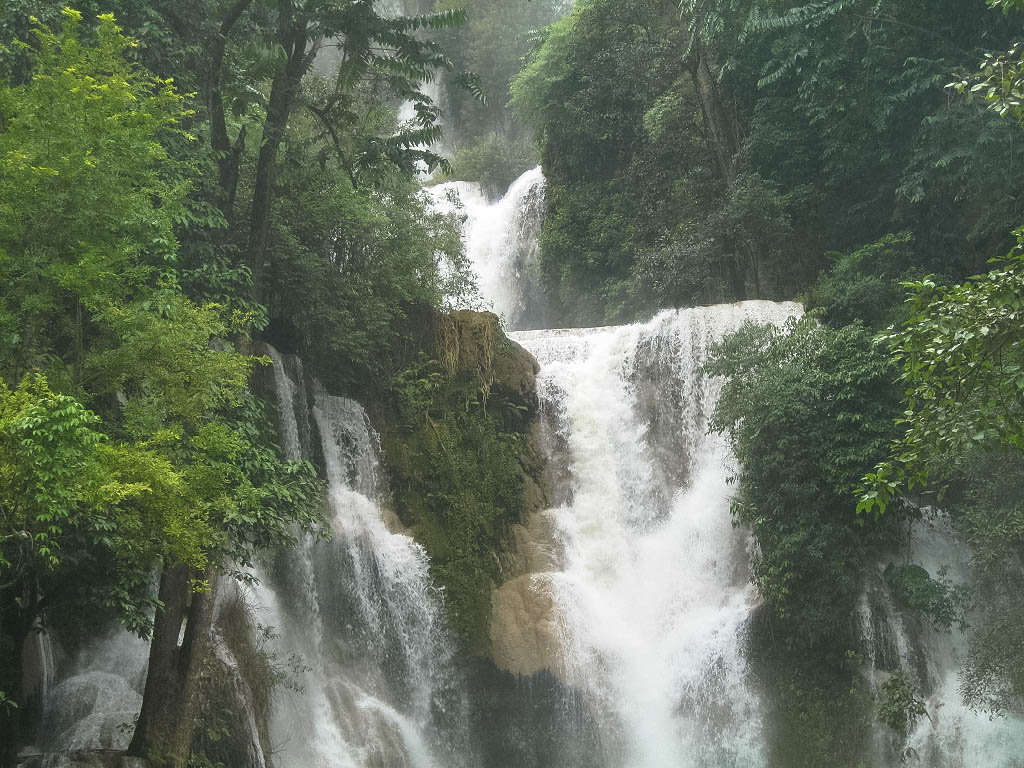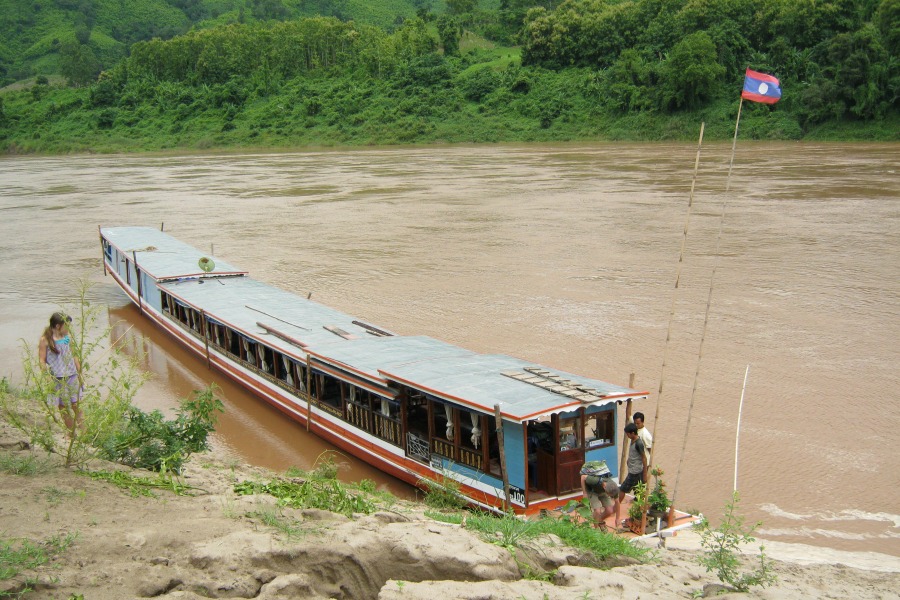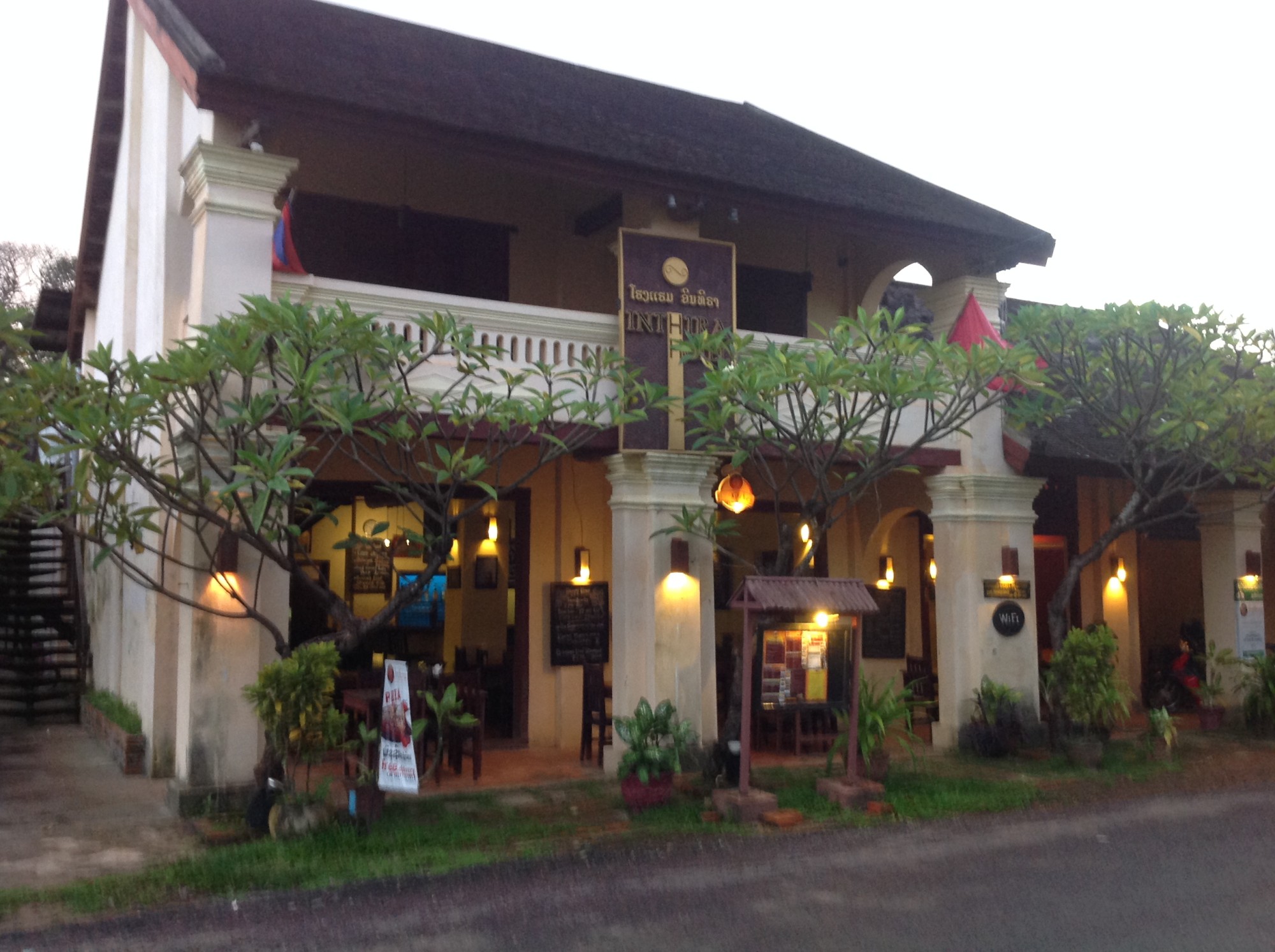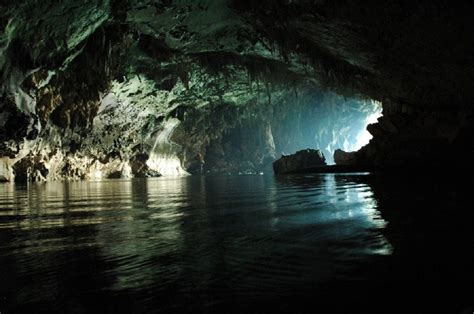Luang Pra Bang Laos Travel Guide A Vagabond Life
Nestled between the Mekong and Nam Khan rivers, Luang Prabang, Laos, is a UNESCO World Heritage Site that captivates travelers with its blend of rich cultural heritage, stunning natural landscapes, and tranquil ambiance. This historic town, often regarded as the heart of Laos, offers a unique mix of traditional Lao architecture and colonial influences, making it one of the most picturesque destinations in Southeast Asia.
Luang Prabang is a spiritual and cultural hub, where ancient Buddhist traditions thrive. The town is home to more than 30 gilded temples, with Wat Xieng Thong and Wat Mai being among the most revered. Each morning, the streets come alive with the Alms Giving Ceremony, where saffron-robed monks silently collect offerings from locals and visitors alike—a must-see for anyone visiting Luang Prabang.
One of the town’s highlights is Mount Phou Si, a sacred hill offering panoramic views of Luang Prabang and the surrounding countryside. The climb to the summit is rewarded with breathtaking vistas, especially during sunrise and sunset. Nearby, the Royal Palace—now the Luang Prabang National Museum—offers a fascinating glimpse into the life of the Lao monarchy, with its blend of traditional Lao and French colonial architecture.
Luang Prabang is also the gateway to some of Laos’s most stunning natural attractions. The turquoise waters of Kuang Si Falls, a short drive from town, provide the perfect spot for a refreshing swim amidst lush tropical surroundings. The Pak Ou Caves, filled with thousands of Buddha statues, are another essential stop, accessible by a scenic boat ride along the Mekong River.
Whether you’re exploring its ancient temples, enjoying the serene beauty of its waterfalls, or immersing yourself in the local culture, Luang Prabang, Laos, offers an unforgettable travel experience that showcases the best of this enchanting country.
Luang Pra Bang Laos Map
Getting To Luang Pra Bang Laos
By Air
The most convenient way to reach Luang Prabang, Laos, is by air. Luang Prabang International Airport (LPQ) is located just 4 kilometers from the town center and offers direct flights from various regional hubs, including Bangkok, Hanoi, Vientiane, and Chiang Mai. The airport is small but efficient, with taxis and tuk-tuks readily available outside the terminal to take you to your accommodation. The ride to the town center typically takes about 15 minutes.
By Bus
For those already in Laos or neighboring countries, traveling to Luang Prabang by bus is an option. Buses and minivans connect Luang Prabang to major cities like Vientiane, Vang Vieng, and Nong Khiaw. While the journey can be long, especially from Vientiane (which takes around 10-12 hours), the scenic views along the mountainous roads are well worth it. Be prepared for winding roads, and consider taking an overnight bus for a more comfortable experience.
By Boat
For a more adventurous route, you can travel to Luang Prabang by boat along the Mekong River. Popular routes include slow boats from Huay Xai, near the border with Thailand. The journey typically takes two days, with an overnight stop in Pakbeng. This scenic trip offers a unique perspective of Laos’s rural landscapes and river life.
Getting Around Luang Pra Bang Laos
On Foot
Luang Prabang is a compact town, making it easy to explore on foot. Most of the main attractions, including temples, markets, and the Royal Palace, are within walking distance of each other. Walking allows you to soak in the town’s atmosphere at a leisurely pace, discovering hidden gems along the way.
By Bicycle
Renting a bicycle is another popular option for getting around Luang Prabang. Many guesthouses and shops offer bike rentals at affordable rates. Cycling is a great way to explore the town and nearby attractions like the villages across the Nam Khan River. The flat terrain and light traffic make biking a pleasant experience.
By Tuk-Tuk
Tuk-tuks are readily available throughout Luang Prabang and are a convenient way to travel longer distances or when you prefer not to walk. They can be hired for short trips within the town or for day trips to nearby attractions like Kuang Si Falls or the Pak Ou Caves. Be sure to negotiate the fare before starting your journey.
By Motorbike
For more flexibility, you can rent a motorbike to explore Luang Prabang and its surrounding areas. Motorbike rentals are available from various shops in town, and they offer the freedom to visit attractions at your own pace. However, ensure you have a valid license and are familiar with local traffic rules.
By Boat
Given its location at the confluence of two rivers, boats are a common mode of transportation in Luang Prabang. You can take a boat trip along the Mekong or Nam Khan rivers to visit attractions like the Pak Ou Caves or simply enjoy a scenic cruise. Local operators offer both private and shared boat tours.
Navigating Luang Prabang, Laos is straightforward, with multiple transportation options available to suit different preferences and budgets, ensuring a smooth and enjoyable experience as you explore this charming town.
Things To See & Do In Luang Pra Bang Laos
Luang Pra Bang Laos Royal Palace
The Royal Palace, centrally located in Luang Prabang, Laos, stands as a prominent symbol of the nation’s regal history and cultural heritage. Constructed in 1904 during the French colonial era, the palace was originally built for King Sisavang Vong and his family. Its architectural design is a harmonious blend of traditional Lao motifs and French Beaux-Arts styles, reflecting the confluence of indigenous and colonial influences.
Today, the Royal Palace has been transformed into the Luang Prabang National Museum, offering visitors a unique glimpse into the life of the Lao monarchy. Upon entering, guests can explore a variety of rooms meticulously preserved to showcase royal artifacts, religious objects, and gifts from foreign dignitaries. The Throne Room, adorned with intricate mosaics and rich tapestries, is particularly noteworthy, encapsulating the grandeur and elegance of the former royal court.
One of the museum’s most revered treasures is the Phra Bang Buddha, a sacred 83-centimeter tall gold-alloy statue believed to date back to the first century. This statue is so significant that it is thought to have given Luang Prabang its name, which translates to “City of the Phra Bang.” While the original statue is housed within the museum for preservation, a replica is displayed in the adjacent Haw Pha Bang temple, a stunning structure on the palace grounds completed in recent years.
The palace complex also features a collection of vintage royal automobiles, including classic models from American and European manufacturers, offering insight into the opulent lifestyle of the Lao royals. Lush gardens and well-maintained pathways surround the buildings, providing a serene environment for visitors to stroll and reflect.
When planning a visit, it’s important to note that the museum enforces a dress code out of respect for its cultural significance; shoulders and knees should be covered. Photography inside the museum is restricted to protect the artifacts. Open from Tuesday to Sunday, the Royal Palace Museum provides an enriching experience for those interested in understanding the nuanced history of Laos and its monarchy. It’s not just a museum but a journey through time, encapsulating the essence of Lao royal legacy.
Mount Phou Si (Mt Chomsy) Luang Pra Bang
Mount Phou Si, also known as Mount Chomsy, is a prominent hill in the heart of Luang Prabang, Laos. Rising about 100 meters above the surrounding town, it offers one of the most scenic and panoramic views of Luang Prabang, the Mekong River, and the surrounding landscape.
Mount Phou Si is a significant spiritual site, home to several important Buddhist shrines and temples. The most notable temple is Wat Chom Si, located at the summit. To reach the top, visitors can choose between two main staircases. The most popular route starts on Sisavangvong Road, near the Royal Palace Museum, and involves climbing 328 steps. Along the way, visitors pass various smaller shrines and Buddha statues, including the “Footprint of Buddha” and a reclining Buddha statue, which are worth pausing to admire.
At the summit, Wat Chom Si’s golden stupa gleams in the sunlight, providing a striking contrast to the deep green of the surrounding hills. The temple is a serene spot, perfect for reflection and taking in the spiritual ambiance. The real highlight, however, is the panoramic view. At sunrise and sunset, the summit becomes a popular gathering place as the soft light bathes the town and rivers in a golden hue, creating a breathtaking and memorable scene.
Visitors are advised to bring water, as the climb can be steep, especially in the heat of the day. Modest dress is also recommended, as the site is of religious significance. Whether you’re looking to explore the spiritual side of Luang Prabang or simply enjoy its natural beauty, a visit to Mount Phou Si is a must-do experience.
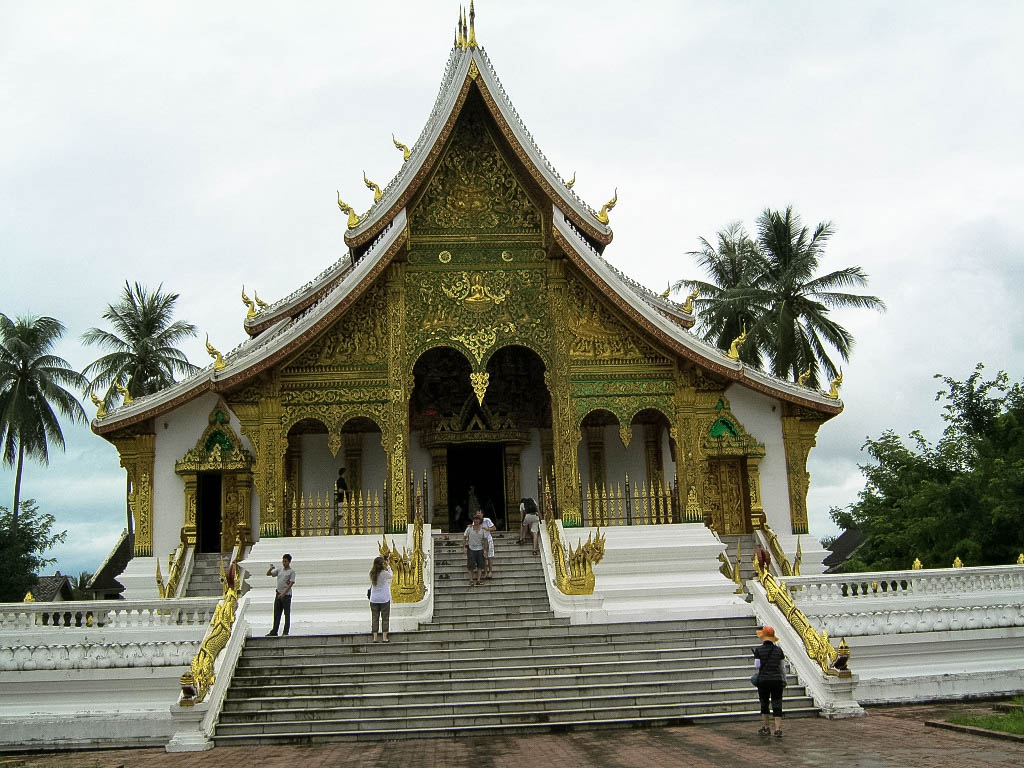
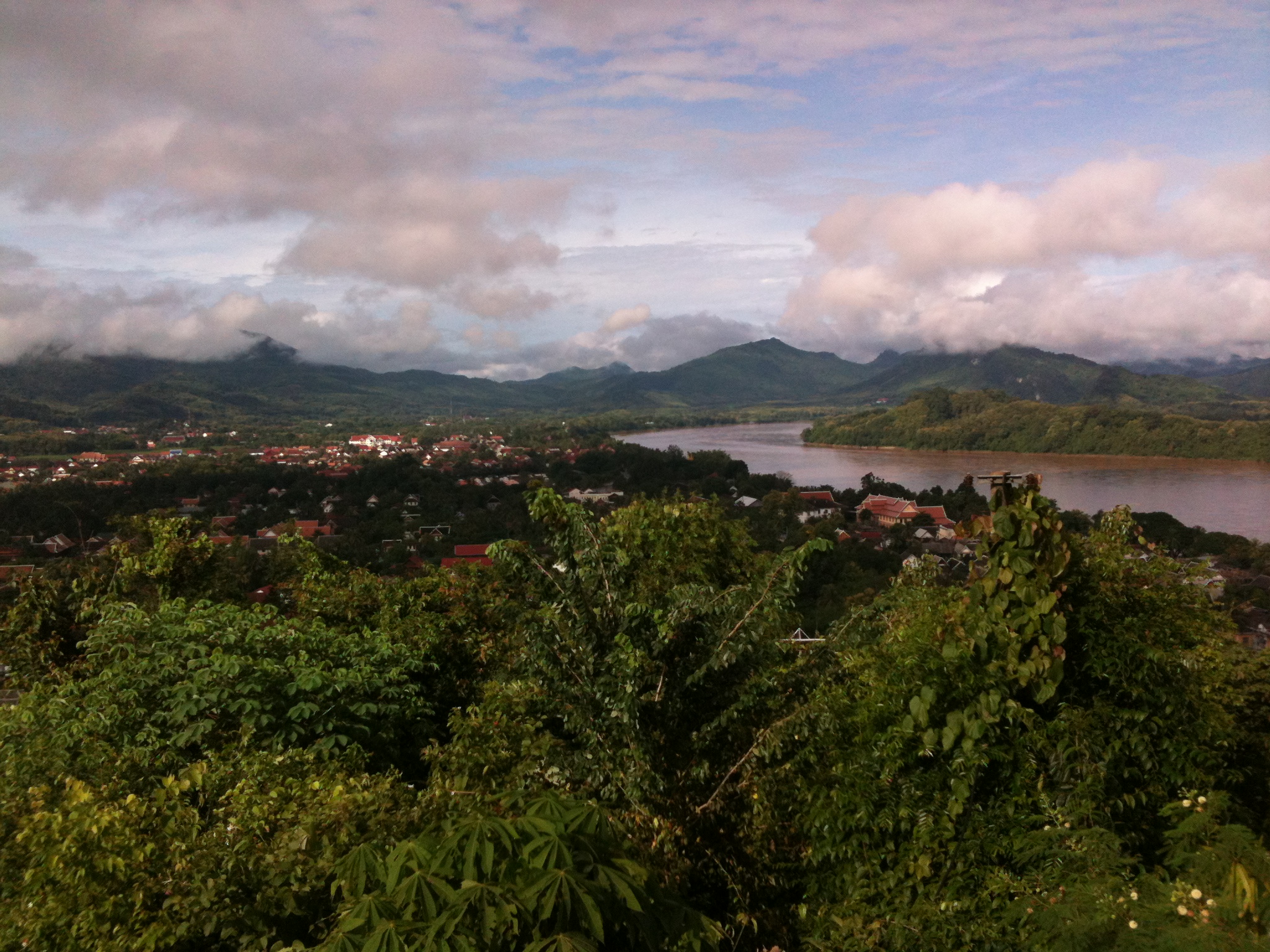
Luang Pra Bang Laos Monks Alms Walk
The Alms Giving Ceremony, known locally as “Tak Bat,” is one of the most revered traditions in Luang Prabang, Laos. Every morning at dawn, hundreds of saffron-robed Buddhist monks silently walk the streets to collect alms from the local community and visitors. This ancient practice is not only a spiritual ritual but also a way for the laypeople to make merit and gain blessings.
The ceremony begins just before sunrise, around 5:30 a.m., with the monks emerging from the numerous temples scattered throughout the town. They walk barefoot in a single file, carrying their alms bowls, while locals and tourists kneel along the roadside to offer food. It’s essential to approach the ritual with respect and mindfulness, as it is a solemn and sacred event.
When participating, it’s customary to offer simple, non-perishable food items that can sustain the monks throughout the day. Sticky rice, the staple food of Laos, is the most common offering. It’s prepared fresh and offered in small, bite-sized portions. Other appropriate items include fresh fruit like bananas, oranges, or apples, and pre-packaged snacks, such as biscuits or crackers. Some people also offer traditional Lao sweets or dried goods. It’s important to note that the food should be placed directly into the monks’ bowls without any physical contact.
Visitors are encouraged to dress modestly, with shoulders and knees covered, and to remain quiet and respectful during the ceremony. Photographs should be taken discreetly from a distance, without disturbing the monks or the participants. By observing these practices, visitors can partake in a meaningful and respectful experience of Luang Prabang’s rich cultural and spiritual heritage.
Kuang Si Falls Luang Pra Bang
Kuang Si Falls, located about 29 kilometers south of Luang Prabang in Laos, is one of the region’s most popular natural attractions. This multi-tiered waterfall is renowned for its striking turquoise-blue waters, which cascade down limestone formations into a series of inviting pools.
The falls are easily accessible by tuk-tuk, motorbike, or guided tour from Luang Prabang, making it a popular day trip for visitors. Upon arrival, visitors are greeted by a well-maintained path that leads through lush jungle terrain. The trail to the falls is an easy walk and also passes by the Tat Kuang Si Bear Rescue Centre, where Asiatic black bears rescued from poachers are cared for.
The main waterfall drops from a height of approximately 50 meters, creating a stunning visual display as the water flows into several smaller pools below. These pools are perfect for swimming, offering a refreshing break from the tropical heat. The water’s vibrant color is due to the high mineral content in the limestone rocks, giving the falls their unique and picturesque appearance.
Kuang Si Falls also offers various picnic spots and viewpoints, making it an ideal location for both relaxation and photography. The area around the falls is well-equipped with facilities, including restrooms and food stalls, ensuring a comfortable visit for travelers of all ages.
